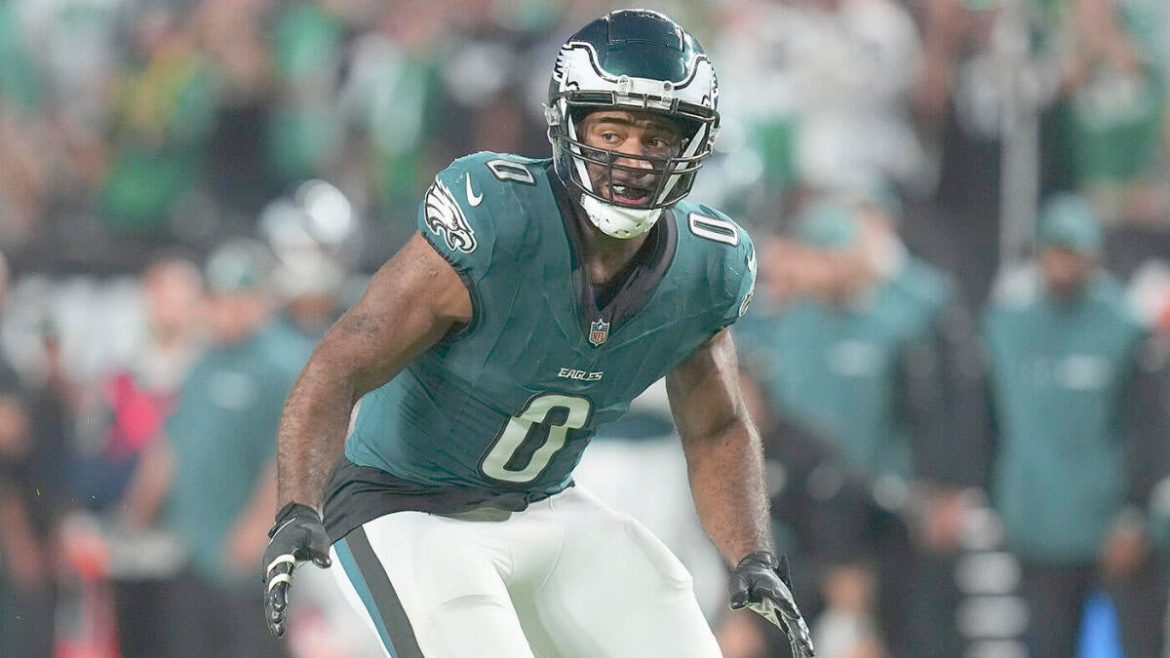The Philadelphia Eagles, under the management of GM Howie Roseman, have experienced a rollercoaster ride with their free-agent signings. While some acquisitions have propelled the team to success, others have turned into costly missteps that continue to haunt fans and shape perceptions of Roseman’s tenure. This analysis delves into the most notorious free-agent misfires during Roseman’s era, exploring the context, impact, and lessons embedded in each major signing.
Setting the Stage: Howie Roseman’s Role and Expectations
Howie Roseman, having served as the Eagles’ general manager for several years, holds primary responsibility for roster construction and salary cap management — elements critical to a team’s on-field success and long-term viability. Operating in a competitive NFL landscape, Roseman’s signings ideally strike a balance between immediate impact and prudent financial commitment.
Yet, as the majority of NFL GMs experience, not all gambles pay off. Free agency, especially for high-cost players, inherently carries risk. Overpaying or betting on underperforming veterans can limit flexibility, creating lingering challenges in roster planning. This dynamic is clearly reflected in several of Roseman’s most regrettable free-agent signings.
—
The Bryce Huff Example: A Three-Year, $51 Million Cautionary Tale
Bryce Huff, a defensive lineman signed to a lucrative three-year, $51.1 million contract, stands out as a recent emblem of Roseman’s free agency pitfalls. Brought in to compensate for the departure of Haason Reddick, Huff’s deal was intended to solidify an already formidable Eagles pass rush.
However, Huff’s contribution to a defense that ranked number one in football was minimal. The mismatch between the investment and on-field productivity has led to Huff being characterized as a major miss. The Eagles ultimately traded him to the San Francisco 49ers for a mid-round draft pick, effectively cutting losses on a contract that had become a burden on both performance and cap space.
Huff’s case illustrates the dangers of high-priced signings based more on potential than proven impact. It also underscores how a single large deal can constrain a front office’s flexibility, altering future personnel decisions.
—
Revisiting the Past: Other Notable Free-Agent Whiffs Under Roseman
Beyond Huff, Roseman’s tenure includes several other signings that have failed to meet expectations. These deals collectively contribute to the narrative of uneven free agency results:
– Demetress Bell (Offensive Line): Once viewed as a promising offensive tackle, Bell did not live up to the contract terms, accruing criticism for inconsistent play and injuries that limited his impact.
– Byron Maxwell (Cornerback): Maxwell’s signing drew scrutiny due to his underperformance in coverage and inability to bolster the secondary as hoped, leading to a disappointment considering the investment.
– DeMarco Murray (Running Back): Signed in a high-profile move, Murray’s tenure was short-lived and underwhelming, ultimately culminating in a trade away from the Eagles after the 2015 season.
– Nnamdi Asomugha (Cornerback): Although heralded as a previous elite defender, Asomugha struggled upon joining the Eagles, his contract eventually labeled as one of the franchise’s bigger mistakes.
These historic misfires highlight a pattern of high-risk free-agent bets that did not translate into long-term value or on-field success. In each case, large contracts were extended with expectations that were unmet, resulting in both cost inefficiencies and roster headaches.
—
Balancing Hits and Misses: The Complexity of Roseman’s Legacy
It is important to recognize that alongside these flops, Roseman’s record includes some sound free-agent acquisitions and savvy moves that contributed to the Eagles’ sustained competitiveness, including a Super Bowl triumph. The contrast between Roseman’s best and worst signings illuminates the unpredictability and challenge inherent in NFL roster management.
Evaluations of Roseman’s free agency strategy often pivot on interpreting these hits and misses collectively. A critical insight emerges: success in the NFL’s free-agent market requires not just financial capability, but also precision in player evaluation, patience, and sometimes a bit of fortune.
—
Financial Implications and Cap Management Concerns
Several of these free-agent signings, including Huff and others, had significant ramifications for the Eagles’ salary cap. Misjudged contracts can siphon resources away from emerging talent or restrict mid-season roster moves, constraining overall team-building agility.
Trading Huff and releasing other costly veterans were moves aimed at regaining cap space—over $32 million became available after shedding players like Slay and Bradberry alongside Huff. Such maneuvers are necessary corrections but highlight how costly signings can create cycles of damage control and restructuring.
—
Conclusion: Enduring Lessons and the Road Ahead
The Philadelphia Eagles under Howie Roseman encapsulate the dual-edged sword of free-agent signings. Moments like the Bryce Huff contract serve as cautionary tales about the risks of veering toward expensive, high-expectation deals without guaranteed returns. Meanwhile, a broader look at Roseman’s tenure reveals the inherent difficulty of assembling a championship-caliber roster amid the fluctuating fortunes of free agency.
For the Eagles and their management team, the path forward involves leveraging past experiences to refine evaluation processes, emphasize balanced cap strategies, and foster patience with development. While no GM can dodge every misstep, minimizing the scale and frequency of high-profile free-agent whiffs will be vital to sustaining competitiveness and fan faith.
Ultimately, these signing failures remain etched in Eagles history, a reminder that in the NFL, free agency is as much an art of risk management as it is of talent acquisition. Howie Roseman’s legacy will be shaped both by his triumphs and those who didn’t quite pan out—lessons that resonate well beyond Philadelphia’s borders.





